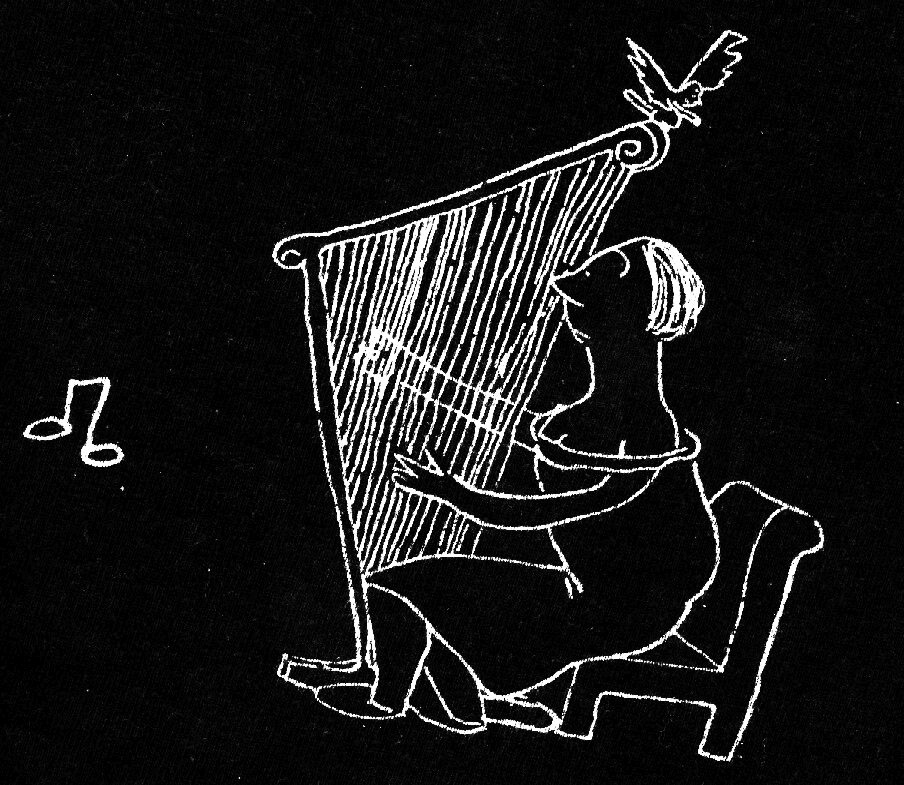
| |
 |
 |
|
|
Self-Replicating Programs
Welcome
A self-writing replicating program is one which outputs itself,
starting with all registers empty.
At first blush it seems paradoxical that such programs would exist: there is no direct way to get the 1# interpreter to spit out the program that is inside it. And anyways, it would seem that typically, a program is usually longer than its output. So how can a program output itself? This lesson shows how it is done. Even more, it will show you how such programs work and give you a chance to try your hand at writing related programs. In order to get a program which writes itself, one must use some sort of trick or clever idea. Our goal is to explain one such clever idea, and then to see other applications of it as we go. Before you understand it, the idea will seem to be a trick, or even a fluke: we have a program, and it just so happens to output itself. But as we come to understand it better, the trick becomes tamed into a general method. At the root of our work is something we've seen in the last lesson: the ability of 1# programs to write and modify other programs. The exercises in ths lesson are much more challenging than the previous ones. 
diag
We begin with a program which we'll call diag in this lesson and in the following ones, too. When diag is run with a word x in R1, the result is φwrite(x) + x in R1. And running that gives φx(x) in R1.
At the bottom we have two sub-programs which we list as if they were single steps. These are move3,1 and move2,1 from Lesson One. The three branches of the case instruction at the top take us to move3,1 (if R1 is empty), to the blue sub-program if the first symbol of R1 is a 1, and to the brown sub-program if that symbol is a #. Note that we have a big loop that takes symbols off of R1 and writes the same thing in R2 and some related words in R3. The way that the words in R3 are related to the original input in R1 is as follows: each time a 1 is removed from R1, what goes into R3 is the program which would write a 1 in R1 (this is 1#). And each time a # is removed from R1, what goes into R3 is the program which would write a # in R1 (this is 1##).
It might help to say things a bit
differently on this. So here is an informal description of
what diag is doing:
Move x from R1 into R2, and also put φwrite(x) in R3. Move R3 back to the now-empty R1.
Finally, move R2 onto the end of R1.
The official version of diag is a very slightly
shortened version of this.
You will want to copy it
to the interpreter both
now and in later lessons:

self
We now define our self-writing program, self.
The idea
is to apply the program
diag to diag
itself.
When we run diag on itself, we get
φwrite(diag) + diag in R1.
So when we run self on nothing, we
first spell out diag into R1.
But running diag on diag gives us self, as desired. To summarize: running self on nothing is the same as running diag on itself; and this is self. In symbols, That is,
Here is self
By running it slowly, you can watch the events just described. The run of self takes 14,204 steps. The idea in EnglishIt might be useful to expose the device behind our self-replicating program self by rendering it into English. (But the discussion here is not really needed for the formal work, and you may skip this section if you like.) We are interested in "programs" of English (that is, sequences of instructions). We want instructions of a very simple form, including instructions to print various characters, and instructions which accept one or more sequences of words as arguments, and so on. We'll allow a small amount of quotation. Perhaps the most direct example of a self-replicating program would be print me. But this is hard to adapt directly into 1#. Instead, we want to use
Here "what you see" and "it" refer to the input, and "before" means "to the left of". Applying this English program to the English program print me would give
Let's apply this English version of diag to itself. We get the longer program below. It is the English version of self.
Let's then see what happens if we execute that last long program. We would print out the instructions to print our version of diag, followed up by that very program. The upshot is that we get the long program back! And this same explanation applies to the 1# diag that we've already seen. Another presentation of the idea
We offer another presentation of the idea behind
diag and self.
Let's suppose that you want to write a self-replicating program,
say s, from scratch.
Let's say that you just have on glimmer of an idea,
that s should be
of the following form:
First, a program x should be written to R1.
Second, a program y should be run (with x in R1 and everything else empty).
So running x on nothing will give &phixy in R1 at the end.
We therefore want to find s, x, and y so that
We are free to find any s, x, and y that we like that meets these requirements.
Wouldn't it be nice if x = y? So why don't we just try to find s and x so that
Now it is clear that if we find x we then can determine s automatically,
using the first equation. We only need to have x be a program with the property
that
But again, we are free to make x be any program we like. We might as well
make x have the property that for all z,
since if we do this, then it automatically will hold that
φx(x) = φwrite(x) + x.
And now things are much easier. It is not hard to write x so that
φx(z) = φwrite(z) + z for all z;
this is diag.
Finally, the reasoning we did in this small discussion shows that
we can get a self replicating program by
setting s = φx(x).
The rest of this lesson consists of exercises that allow
you to firm up your understanding of the basic ideas
in diag and self by elaborating on
and extending them.
In all of these exercises, you are invited
to check your work on the interpreter.
[You will probably want to work through Lesson Six
before attempting this problem. But it might be fun to try now.]
This section has yet to be written.
|
|||||||||||||||||||||||||||||||||||||||||||||||||||||||||||||||||||||||||||||

Last updated:
14 November 2007
|